INTRODUCTION
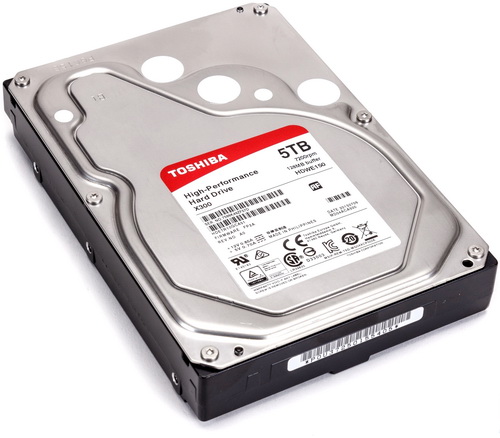
When people talk about hard disk drives or are out looking to get a brand new one the two names that always come up first are as expected of the two leading brands currently in the market namely Seagate and WD (Western Digital). Still although these two are always leading the HDD market (and trading blows over the years in terms of sales) Toshiba doesn't seem to be giving up and although their market share is not nearly as high as those of the other two they seem to be doing quite well especially after taking into account the number of markets/industries Toshiba is currently active in. The X300 line of high-performance 3.5" internal hard drives is among their latest ones and today we'll be testing the 5TB model.
Toshiba Electronics Europe GmbH (TEE) is the European electronic components business of Toshiba Electronic Devices and Storage Corporation. TEE offers a broad IC and discrete product line including high-end memory, microcontrollers, ASICs and ASSPs for automotive, multimedia, industrial, telecoms and networking applications. The company also has a wide range of power semiconductor solutions as well as storage products including HDDs, SSDs, SD Cards and USB sticks. TEE was formed in 1973 in Neuss, Germany, providing design, manufacturing, marketing and sales and now has headquarters in Dusseldorf, Germany, with branch offices in France, Italy, Spain, Sweden and the United Kingdom. TEE employs approximately 300 people in Europe. Company president is Mr. Akira Morinaga.
The Toshiba X300 family of 3.5" SATA III hard drives (this is primarily a consumer oriented desktop line) is currently available in 4/5/6/8TB capacities (the 8TB version was added some months after the rest) all of which feature a rotational speed of 7200RPM, 128MB of cache, perpendicular magnetic recording (PMR), NCQ (native command queuing), ramp loading technology (improves reliability) and dual stage actuators (offer increased performance, data integrity and overall drive reliability). Now whereas the 4/5/6TB models feature single 1TB platters to achieve their advertised capacities the 8TB model comes with a total of six 1.33TB platters thus featuring a higher area density (that should also improve performance but unless we can get our hands on it we can't be certain). Finally Toshiba covers the X300 family of hard disk drives with a 2 year limited warranty and reports an MTFB (meantime between failures) of 1.4 million hours.
SPECIFICATIONS AND FEATURES
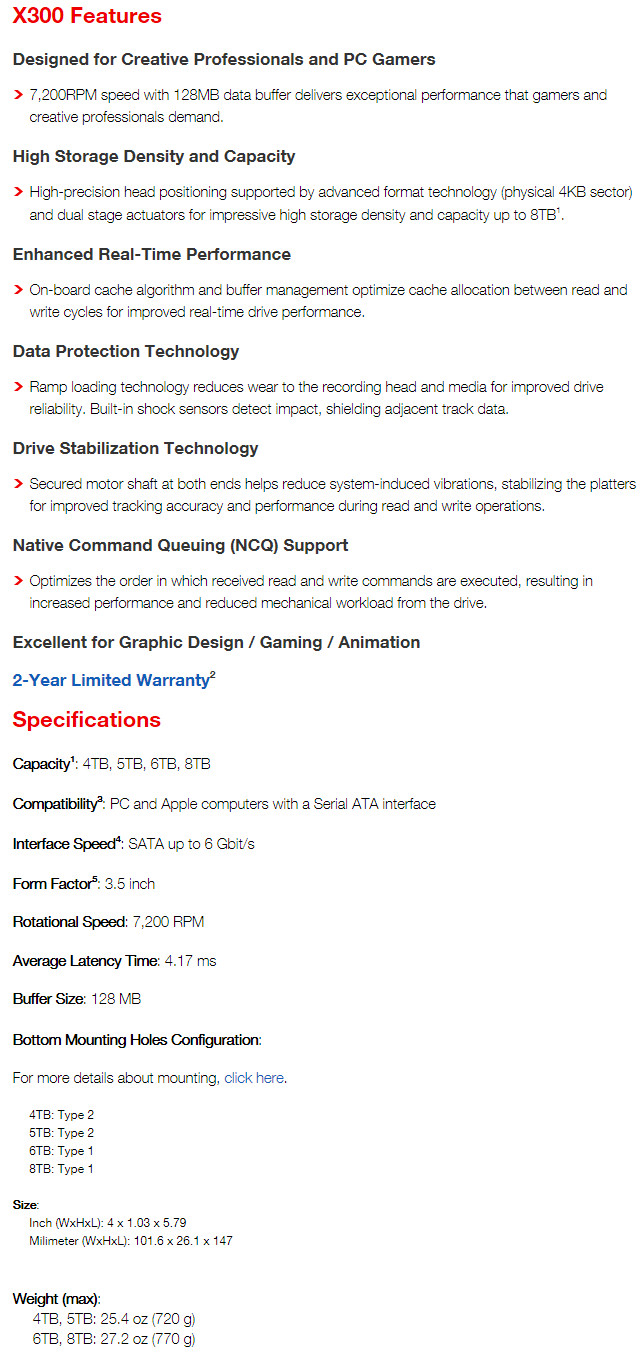
THE X300 5TB
Toshiba ships the X300 inside a black box (retail package) that has a large product picture at the front along of course with their logo and the drive's capacity, rotational speed and available cache.
The main product features are listed on the left side of the box right over the bundle contents.
At the rear Toshiba has printed the main product features in 9 extra languages.
The X300 is not a helium filled drive so its enclosure is almost identical to every other 3.5" drive out there.
A large sticker at the top of the drive list the drive's capacity, rotational speed, buffer, installed firmware, electrical requirements, revision number, factory rollout date, country of manufacture, serial number, part number, barcodes and several certifications.
Typically all of the modules are placed on the other side of the rear PCB for increased protection.
The standard SATA power and data connectors are placed at the rear end of the X300.
TEST BED
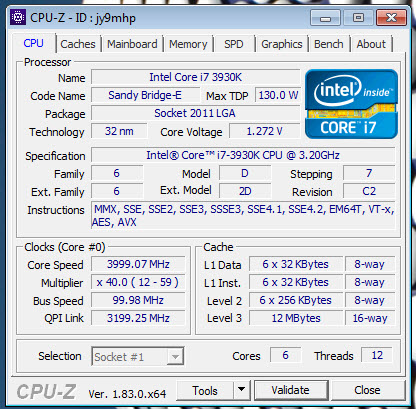

TESTING METHODOLOGY
Thoroughly testing hard disk drives may require time and patience but that's just about it. Of course that doesn't mean that one must take it lightly, at least not when people base their decision on your results. True some choose to only use 2 or 3 benchmarking suits in order to measure the performance of a drive or drives since quite honestly most benchmarking suites do tend to agree with each other (so it's not really wrong) but we always like to take things a step further not because we have to but because we want to be almost 100% certain of the results we get and post in our charts.
So in this kind of reviews we will use a total of 7 different benchmarking suites in an effort to bring you the most accurate results across the board. Now the only reason why i say effort is because real-world usage is not always on par with what results one gets by running several benchmarks on a drive and that's mainly because there are many variables at work from ambient temperatures to hardware configurations and even firmware versions. The benchmarking applications we use are the AIDA64 suite (former Everest Pro), HD Tune Professional (as of October 2016 we also record seek times of 3.5” drives), HD Tach RW, ATTO, Sisoftware Sandra Pro, Crystal Disk Mark 64bit and the PCMARK 7 (secondary storage suite). These benchmarking tools are the best in what they do and as you will also see later on their results more or less agree. Each test is performed a total of 6 times and then the average is recorded into the charts. Temperatures are recorded using Hard Disk Sentinel and after 45 minutes of continuous testing in a 23 degrees Celsius temperature controlled room. Finally we also use an ExTech HD600 dBA meter on each of the drives (5cm away) in order to accurately record their noise levels (during access), although if you don't turn off all system fans when doing so it's quite possible that you will never even hear the drive. The operating system used is a fresh installation of Microsoft Windows 10 Pro with every update installed up until the 12th of April 2018.
TEST RESULTS - AIDA64 / ATTO
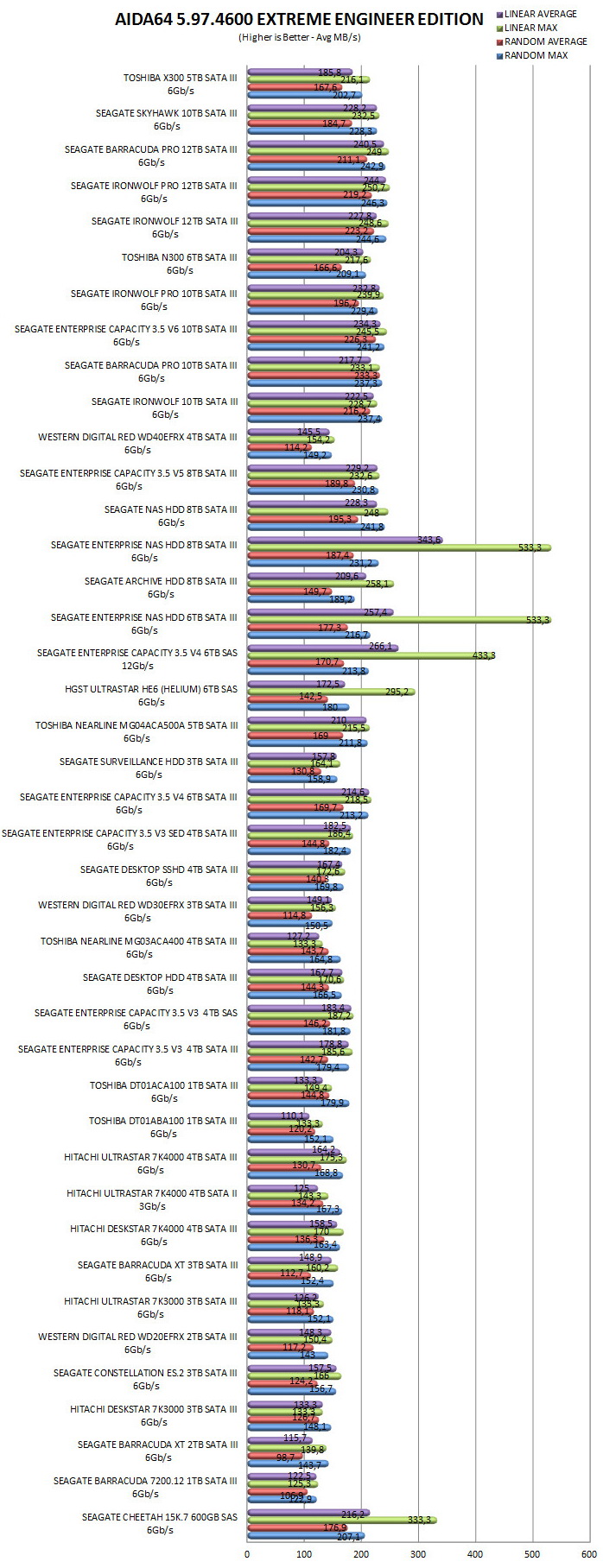

TEST RESULTS - HD TACH RW / HD TUNE PRO
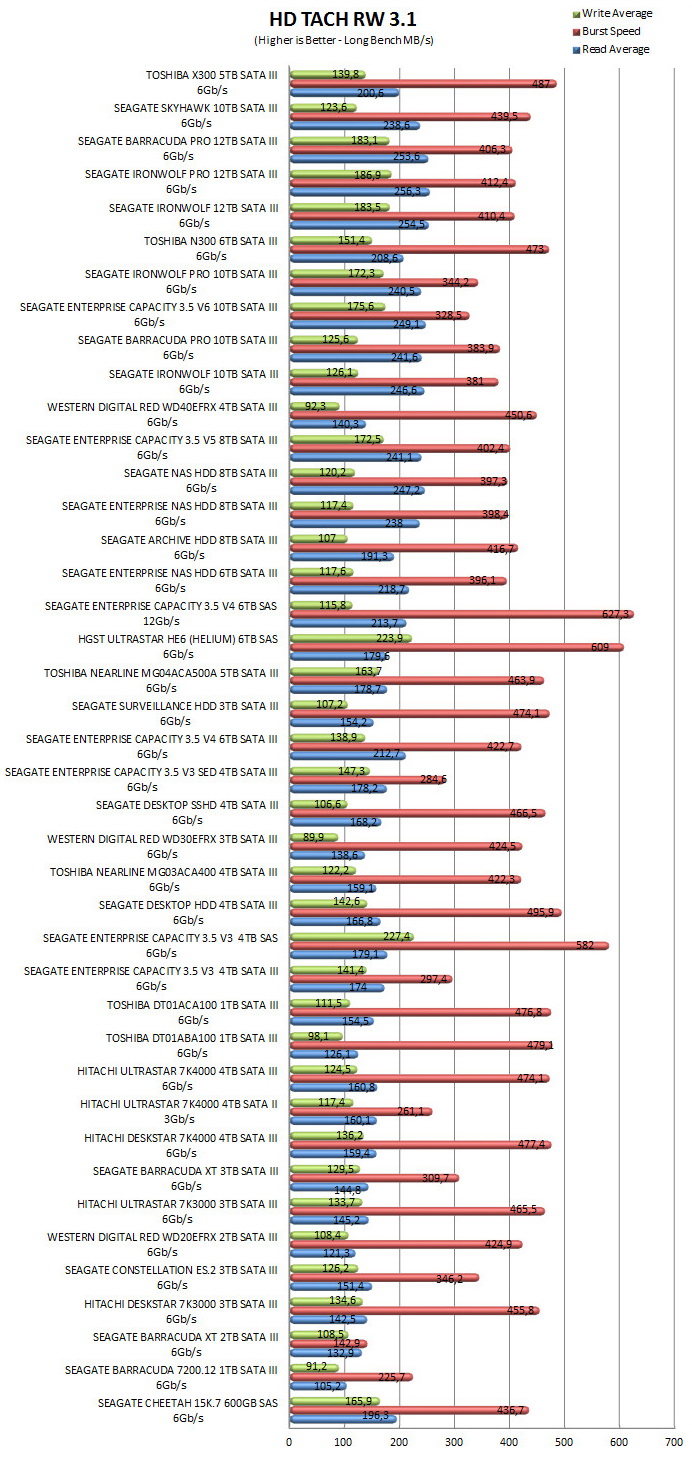
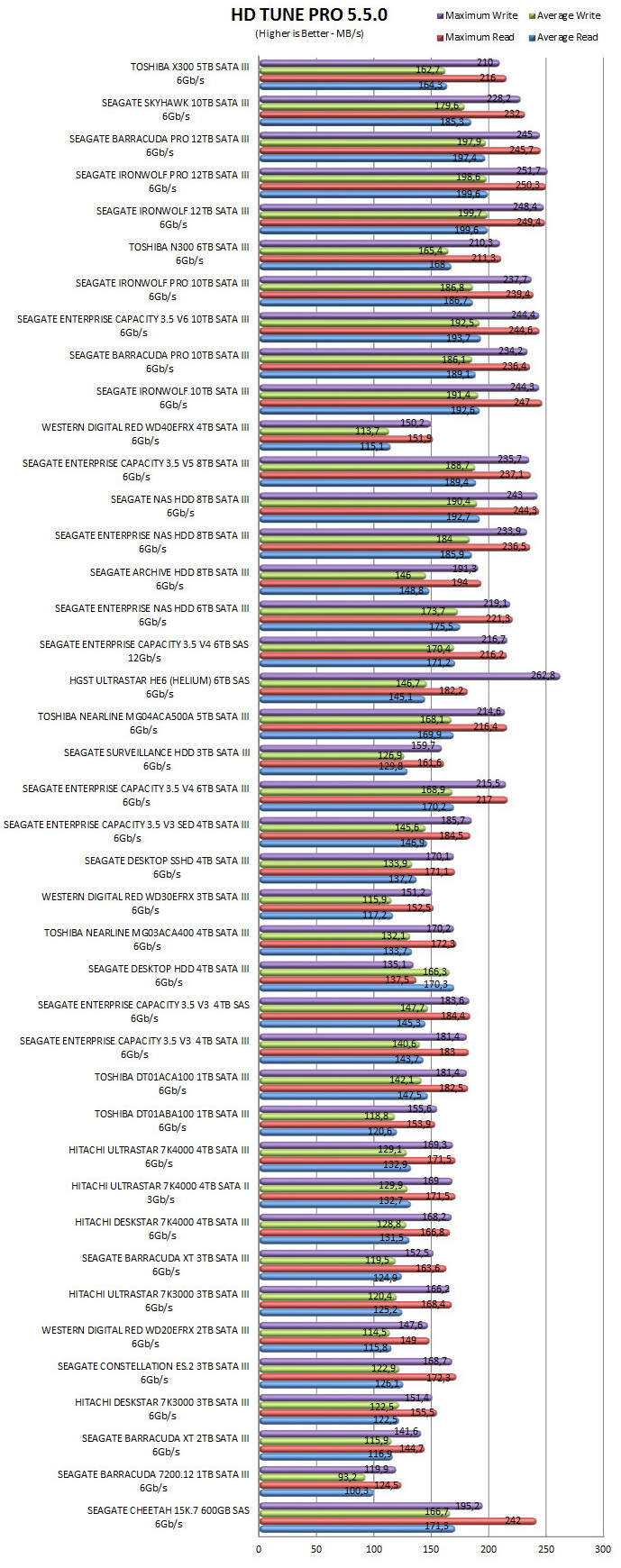
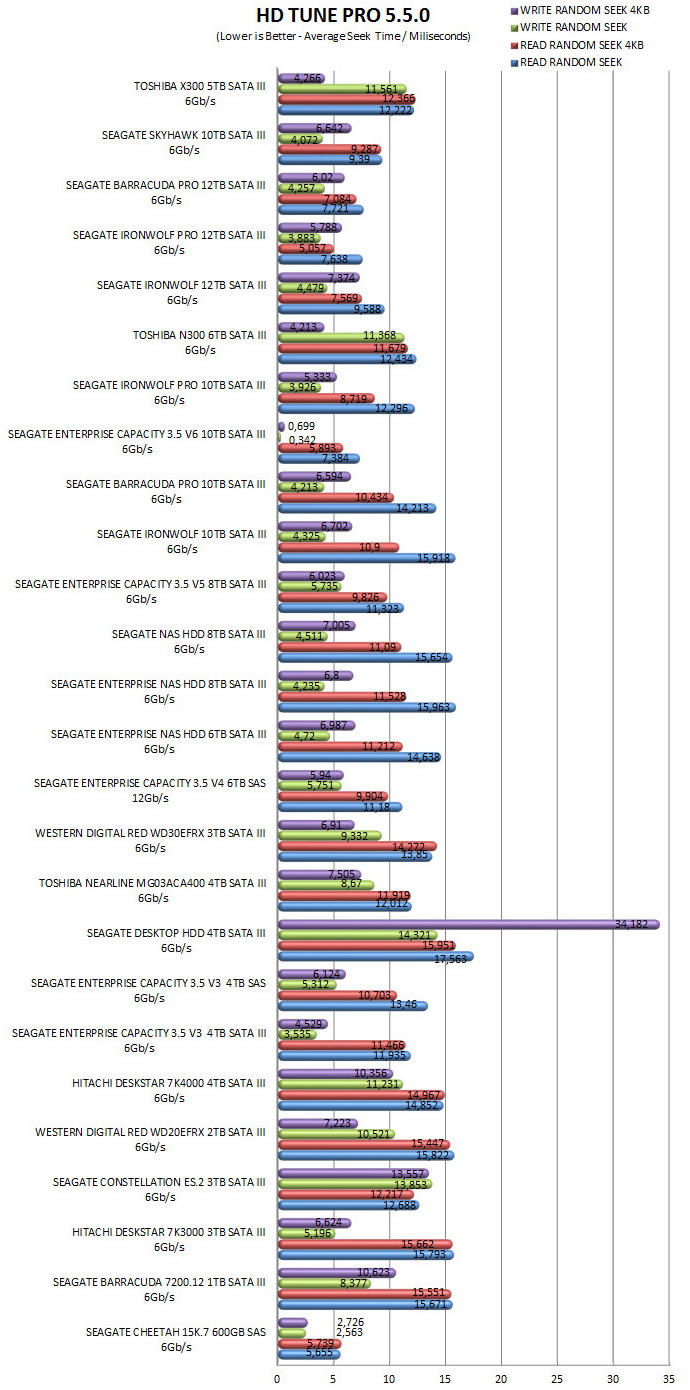
TEST RESULTS - SISOFTWARE SANDRA PRO / CRYSTAL DISK MARK X64
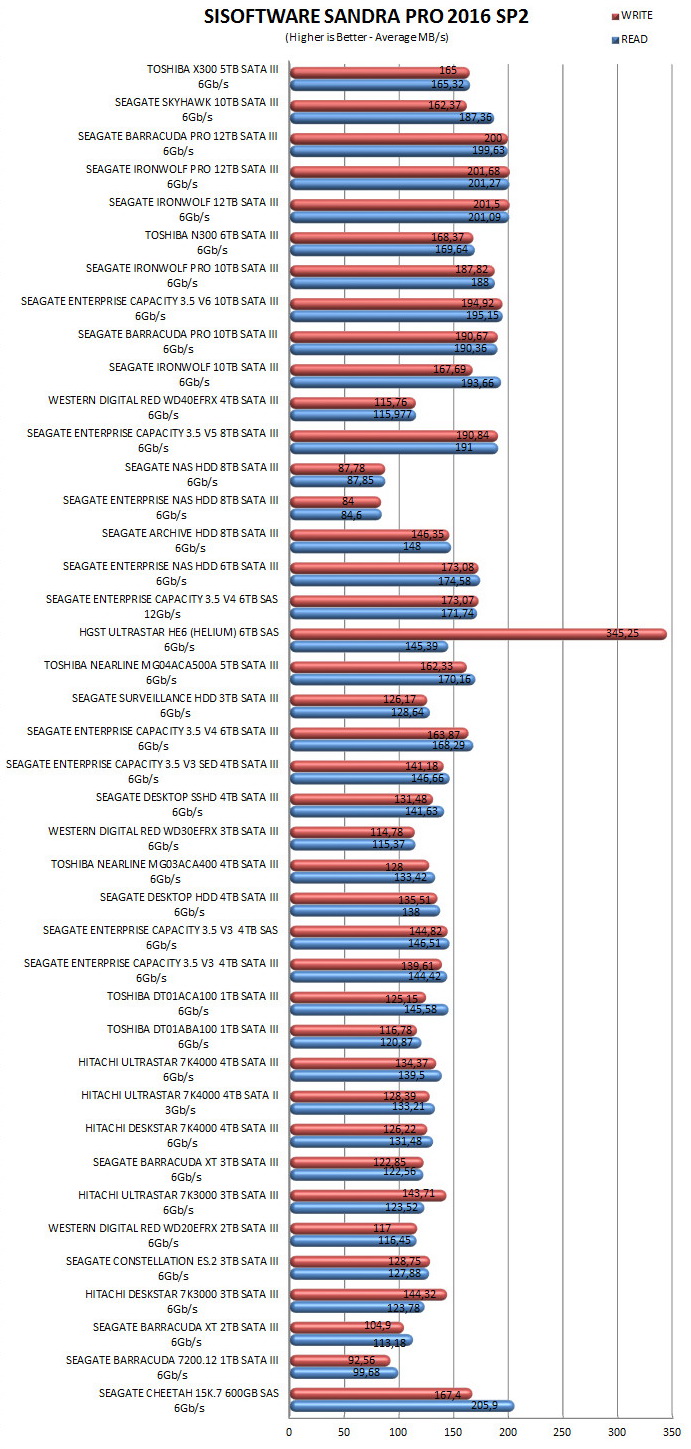

TEST RESULTS – PCMARK 7 / TEMPERATURES / NOISE LEVELS
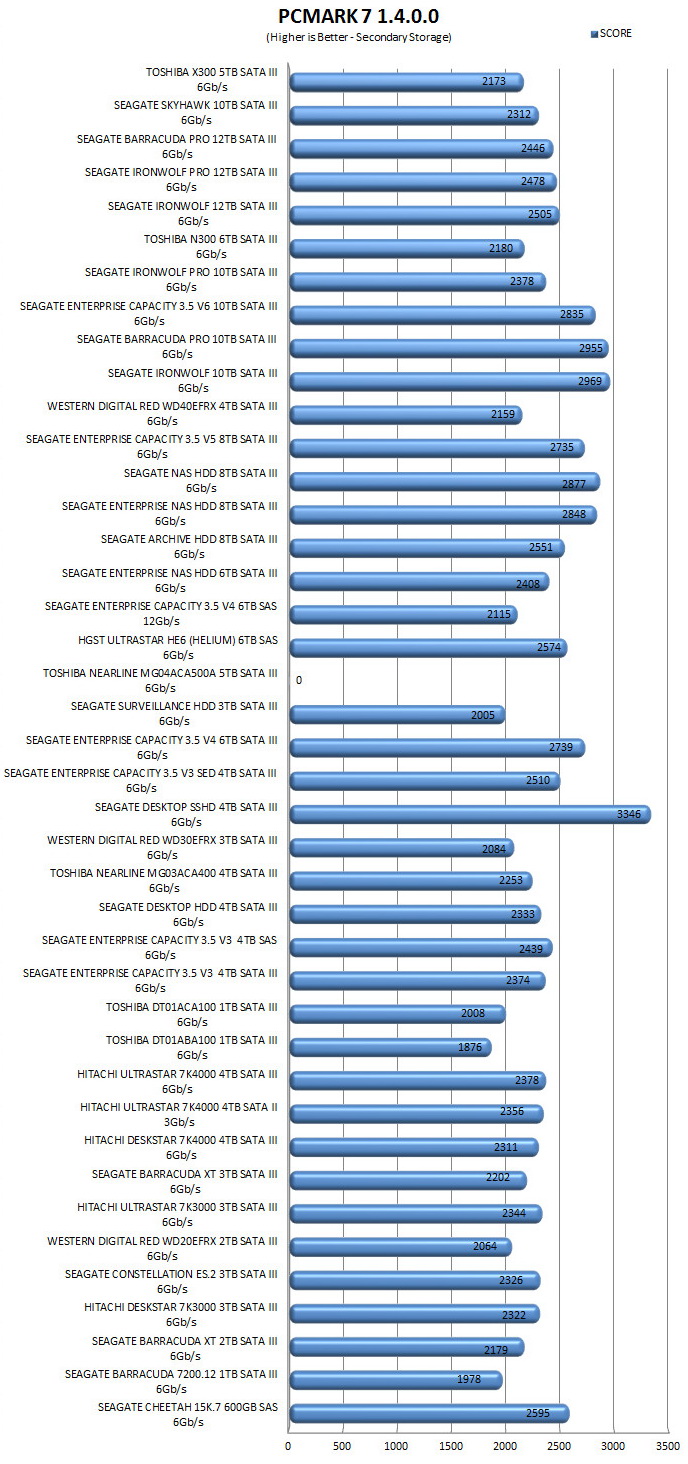


CONCLUSION
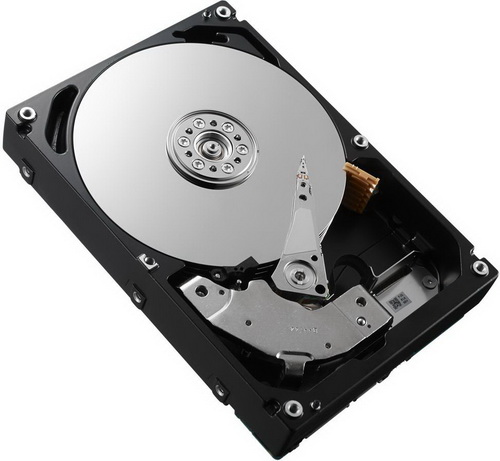
Toshiba’s market share makes it somewhat clear that they are not looking to take Seagate and WD head on (neither in sales nor in terms of performance) so if you’re looking for the fastest SATA III HDD money can buy the X300 desktop family (based on the performance of the 5TB model always) is not it. That’s not to say performance is bad since surpassing 200MB/s in both read and write is not a small feat for any mechanical drive but the X300 5TB just like the N300 6TB which we reviewed a while back are far from the fastest ones out there. Also when the X300 family was launched back in late 2016 it had but only three available capacities (4/5/6TB) thus lagging behind its competition (and their 8/10TB capacity models). Toshiba updated the line in 2017 to also include a higher density 8TB model but again with 12TB models already widely available by Seagate and WD it might have been too late.
Just like with most products in this industry price is what can make or break the X300 family a fact which Toshiba has always been well aware of. Unfortunately although because of that they’ve followed a somewhat aggressive pricing policy the 5TB variant of the X300 family seems to be favored quite less compared to the 6TB one (at least on the other side of the Atlantic). To be more specific although as we speak the X300 5TB retails for USD154.74 inside the USA (Amazon.com) and for 139Euros inside the EU (Amazon.co.uk) the 6TB model retails for just USD164.99 inside the USA (Amazon.com) and for 170Euros inside the EU (Amazon.co.uk). With that out of the way it’s also worth pointing out that the lowest cost 5TB models by Seagate and WD cost roughly 20% more so if budget is an issue Toshiba has you covered. Overall the X300 5TB SATA III hard disk drive by Toshiba may not get the highest scores in terms of performance (and at 11.3W it’s far from the lowest consumption drive out there) but it offers very good endurance numbers (1.4 million hours) and is priced just right and thus is indeed worth our Golden Award.

PROS
- Build Quality (1.400.000 Hours MTBF)
- Very Good Read/Write Performance
- Features
- Low Temperatures
- 2 Year Limited Warranty
- Price (For Some)
CONS
- Only Up To 8TB
- Reported Power Consumption At Load (11.3W)
- Noise Levels (Slightly Over The Competition)

 O-Sense
O-Sense





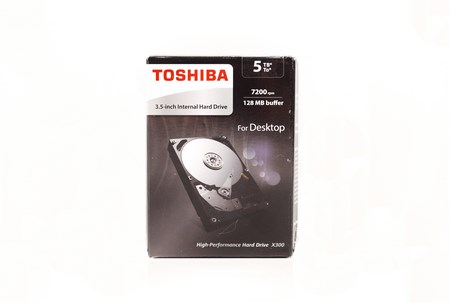

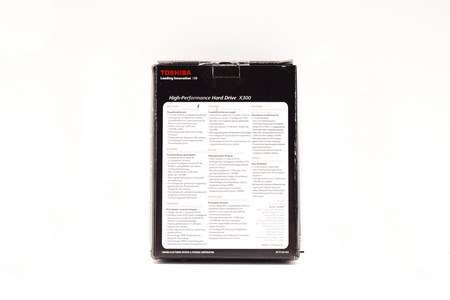






.png)

